From cambium to cones, pine trees are an excellent food source. And unlike many other wild plants, you can eat pine trees all year long.
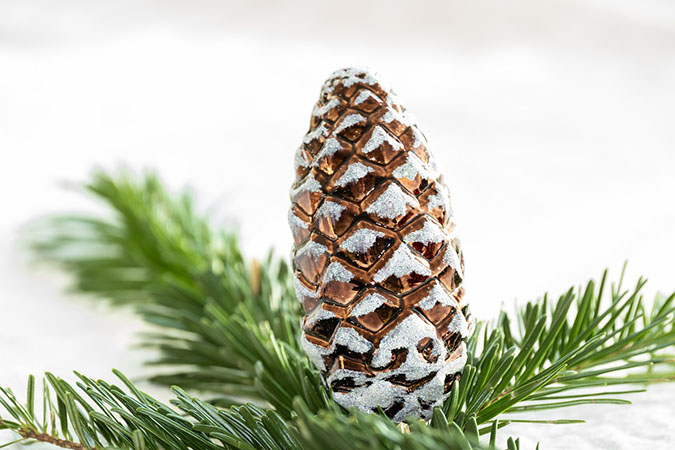
I think I’ve always loved pine trees. I remember, as a child, visiting my grandmother and climbing a particularly tall one in her backyard. From time to time, she would have us grandkids rake up the dense blanket of needles littering the ground. She told me once that when she died, we wouldn’t have to bury her. We should just lay her out under one of her pine trees and let it cover her over. Dark humor perhaps, but it made the point. I grabbed the rake.
Pine trees are useful for more than just climbing and creating chores for your grandkids. They’re also an excellent source of food and medicine. And unlike many other wild plants, you can eat pine trees and use their medicine throughout the entire year.
How to ID Pine Trees
Pine trees are native mainly to the Northern Hemisphere. However, there are pockets of native trees elsewhere, and they have been introduced in much of the world. This group contains over 200 species and can grow in a wide range of environments.
Many pines prefer an acidic soil, though this is not universally true. All pines are edible.
You May Also Enjoy:
“How to Sheet Mulch for an Abundant Garden”
Pine trees are cone-bearing evergreens with needle-shaped leaves. They have a number of potential look-alikes. The most common are spruce, fir, hemlock, and yew trees. Among this list, only the yew is dangerous if misidentified.
Pines are best differentiated from these others by their needles, which appear in bundles of 2, 3, or 5. All of the others have single needles or needles coming out opposite from one another.
Also, the Australian pine is not a true pine. It’s a she-oak, which isn’t actually an oak, either. As with the other look-alikes, it lacks needles in bundles.
Let’s Eat Pine Trees!
You don’t have to be Euell Gibbons to enjoy eating pine trees. After all, “many parts are edible.” Let’s dive right in.
How to Eat Pine Nuts
Most of us have probably eaten pine nuts at one time or another, in a salad or other meal. And while all pine nuts are edible, most pine seeds are just too small to be worth dealing with.
Sadly, the cone size won’t tell you the seed size. If you want to check your local pines, here’s how. Pick the cones when they’re turning brown, but before they open up. Place them in a paper bag in a dry, warm location (near your fireplace is great).
As they dry out, they’ll pop open and drop their seeds. Hopefully, you’ll find nice, big seeds. But more than likely, you’ll find a bunch of tiny, black specs at the bottom of the bag.
You May Also Enjoy:
“15+ Ways to Use Cleavers—From Dinner to Detox”
“19 Benefits of Hibiscus: Blood Pressure Regulator, Cancer Fighter, Liver Protector, and Much More!”
“12 Uses for Rose Petals — From the Kitchen to the Boudoir (With Recipes)”
If you have the large seeds, you can put them in a bag and work them over with a rolling pin. This will separate the hull from the seed. Now they’re ready to be eaten. The tiny ones could be eaten as-is, but I doubt you’ll be able to digest them enough to get any nutrients out of them.
Male Cones Can Be Eaten Raw, Baked, or Boiled
Have you seed the clusters of small, soft cones toward the tips of pine branches? Those are the male cones. These are the pollen-producing parts of a pine tree and are only available seasonally. They can be eaten raw, baked, or boiled.
If you’re concerned about the pollen, read on. You just might change your mind.
Nutritional Benefits of Pine Pollen
Let’s start off by saying that, yes, people can be allergic to pine pollen. But pines are often vilified beyond what they deserve.
Pine pollen is big and heavy. This makes it very visible when a big cloud of it drops from a tree. But that size also means that it doesn’t travel very far.
The tiny, lightweight pollen that’s produced by other trees may spread for miles, and you don’t even know it’s around you. So while you might very well be allergic to the pines around you, it may rather be the case that some other tree is making you sneeze and you blame the pine because it’s the pollen you can see. Besides that, many people claim that eating pollen helps them to lower their allergy response.
You May Also Enjoy:
Pine pollen is a good source of nutrition, including protein, folic acid, several B vitamins, and vitamins C and E. It even contains some vitamin D, which is not common in plants. Pine pollen also contains several minerals and trace elements.
One of its more interesting properties is that it contains a chemical very similar to testosterone. While the levels are not high enough to be frightening, they may contribute to some of the health benefits of pine pollen, such as lessening inflammation, lessening the effects of arthritis, countering the effects of excess estrogens, increased prostate health, and anti-fatigue effects.1)Lee, Kyung-Hee, and Eun-Mi Choi. “Effect of Pine Pollen Extract on Experimental Chronic Arthritis.” Phytotherapy Research23, no. 5 (2009): 651-57. doi:10.1002/ptr.2526.2)Lee, Kyung-Hee, Ae-Jung Kim, and Eun-Mi Choi. “Antioxidant and Antiinflammatory Activity of Pine Pollen Extractin Vitro.” Phytotherapy Research23, no. 1 (2009): 41-48. doi:10.1002/ptr.2525.3)CONG Tao, ZHAO Lin, BAO Shan-fen. “Study on the treatment of rats with benign prostatic hypertrophy by Masson Pine.”4)WU Jing-jing, HUANG Pei-huang, ZHU Liang, LIN Fu-lan. “Anti-fatigue Effects of Flavone in Pines Massoniana Pollen on Mice.” Pine pollen also has liver protective properties.5)LIE Tie, ZHANG Chi, BAO Liu-xing, et al. “Study on the protective effect of pine pollen on alcohol-induced acute hepatic injury.”
To gather pine pollen, place a paper bag over the end of a branch. Turn the branch down and tap or shake the bag. The time of year for this is usually spring, but leave a little wiggle room for your climate and species of pine.
Some people prefer pine pollen in tincture form. Others take 1-2 spoonfuls. If you really are allergic to pine pollen, I’d recommend some caution here.
Pine Needles for Tea and Medicine
Pine needles are never out of season. While they are too tough to be eaten whole, they are commonly used to make herbal tea. Just place some green needles into a cup, pour boiling water over them, and cover them until the liquid is cool enough to drink. Covering the top of the cup during steeping is important, as it helps to prevent volatile oils from escaping. Add lemon and honey to taste. The flavor is similar to a good cough drop.
You May Also Enjoy:
“How to Make Herbal Infusions”
“How to Make Your Own Tinctures, Salves, and Essential Oils”
Pine needles can also be chewed whole to extract the juices, and then spit out. Taste varies from tree to tree and from branch to branch. If you don’t like the taste of the first tree you come to, don’t be discouraged. Try again. Some pine needles are actually quite pleasant.
Medicinally, they also have quite a lot going for them. They’re high in vitamin C and are traditionally used for respiratory issues. They also have anticancer and antimicrobial properties.6)Kwak, Chung Shil, Sung Chae Moon, and Mee Sook Lee. “Antioxidant, Antimutagenic, and Antitumor Effects of Pine Needles (Pinus Densiflora).” Nutrition and Cancer56, no. 2 (2006): 162-71. doi:10.1207/s15327914nc5602_7.7)Jeong, Jin Boo, Eul Won Seo, and Hyung Jin Jeong. “Effect of Extracts from Pine Needle against Oxidative DNA Damage and Apoptosis Induced by Hydroxyl Radical via Antioxidant Activity.” Food and Chemical Toxicology47, no. 8 (2009): 2135-141. doi:10.1016/j.fct.2009.05.034.8)Choi, M.-Y & Choi, E.-J & Lee, E & Rhim, T.-J & Cha, B.-C & Park, H.-J. “Antimicrobial Activites of Pine Needle (pinus densiflora Seib et Zucc.)” Extract. 25. 293-297.] (1997).9)Wei, Feng-xiang & Li, Mei-yu & Song, Yu-hong & Li, Hong-zhi. “[Apoptosis and activity changes of telomerase induced by essential oil from pine needles in HepG2 cell line].” Zhong yao cai = Zhongyaocai = Journal of Chinese medicinal materials. 31. 1197-200. (2008)
Pine Bacon and Other Uses for the Inner Bark (Cambium)
This one is confusing to people at first. When I talk to people about pine bark, they give me a funny look. They’re thinking about the outer bark, which is not edible. Or they’re thinking of the inner, structure-supporting wood in a tree. That’s not edible, either. Or maybe they just picture me chewing on a tree like a beaver.
The edible part is a thin layer of living wood, just under the outer bark. It’s called the cambium layer.
To get to it, just scrape or cut back the outer bark. It’s the light-colored layer just beneath. Make a cut with your knife and peel it right off the tree. You’ll know when you’ve gotten it all because the layer below will be darker and will be much harder to peel off. It really is a thin layer. Think “bacon.” More on that in a moment.
The cambium is available year-round, but take care not to harm the tree. If you go around the entire trunk, you’ll remove the tree’s ability to circulate nutrients and you’ll kill it. Either limit your harvest to a small section on each tree or, better yet, harvest cambium from the branches.
As you’re working on a tree, you’ll see little droplets of pine sap starting to bead up where you’ve peeled away the bark. Depending on the time of year, this sap can be rather sweet. I showed this to my kids one day and they spent the next several minutes licking the tree. Give it a try.
You May Also Enjoy:
Pine cambium can be prepared a number of ways. Eat it raw, boiled, roasted, or fried.
Fried is probably the best compromise between taste and ease of preparation. Cooked this way, it’s often called pine bacon. I like to fry it in butter, though olive oil is another popular choice. Bacon grease would probably work wonders, as well.
I recommend cooking it at a lower temperature than you would use to fry bacon. This helps it become crisp without burning. I’ve also had better success with extra thin slivers, though I’ve never heard anyone else mention this. So maybe I’m just a bad cook.
A better, though slightly more labor intensive, method is to dry it and grind it into a flour. This is best if you’re having trouble with the bark being too fibrous and hard to chew.
You can air-dry the cambium, place it in a dehydrator, or put it in your oven at 200 degrees F (93 degree C) for about 20-30 minutes. Then, give it a spin in your blender to roughly chop it up, and move it to a coffee grinder to make a fine powder.
You can add this powder to soups, breads, or other recipes. Mix powder and milk to make a simple, tasty gruel. You can heat this mixture as you would oatmeal, but I think it’s fine cold, too.
Or, if you want to introduce someone to foraging, try making pine tree cookies. This is an easy, delicious method that guarantees a good experience with foraged foods. To make pine tree cookies, start with your favorite oatmeal cookie recipe, but replace half the oats with pine flour. That’s all there is to it. Big secret, huh?
Pine Sap for Survival
Pine sap is another year-round resource. Less a way to eat pine trees than a tool for survival, it has multiple uses as glue, as fire starter, and in first aid. Pine sap is naturally antibacterial and can be applied to wounds, either as a protective covering or to help glue them shut.10)Vainio-Kaila, Tiina, Aino Kyyhkynen, Lauri Rautkari, and Anja Siitonen. “Antibacterial Effects of Extracts of Pinus Sylvestris and Picea Abies against Staphylococcus Aureus, Enterococcus Faecalis, Escherichia Coli, and Streptococcus Pneumoniae.” BioResources10, no. 4 (2015). doi:10.15376/biores.10.4.7763-7771. It’s not commonly eaten, although there’s really nothing inedible about it. It’s just very sticky. It has traditionally been used as a decongestant in salves and cough drops.
Eating Young Pine Roots
The young roots are edible if you strip the bark off. You can also save the bark and soak it in water overnight to extract the plant’s sugars.
What Do You Think?
Have I gotten you curious enough to go out and sample the parts of a pine tree? Or have you tried to eat pine trees before? Let me know in the comments!
_________________________________________
This article was originally published on December 8, 2018.
Psst! Our Lawyer Wants You to Read This Big, Bad Medical Disclaimer –> The contents of this article, made available via The Grow Network (TGN), are for informational purposes only and do not constitute medical advice; the content is not intended to be a substitute for professional medical advice, diagnosis, or treatment. Always seek the advice of a qualified health care provider with any questions you may have regarding a medical condition. If you think you may be suffering from any medical condition, you should seek immediate medical attention. You should never delay seeking medical advice, disregard medical advice, or discontinue medical treatment because of information provided by TGN. Reliance on any information provided by this article is solely at your own risk. And, of course, never eat a wild plant without first checking with a local expert.

Scott Sexton is a TGN Trailblazer, a highly experimental gardener, an unrelenting weed-eater, and a largely non-profit herbalist (much to his wife’s chagrin). When Scott is not teaching foraging classes, testing out theories in the garden, or grazing in the forest, he can be found at his Facebook page, “A Forager’s Guide to the Zombie Apocalypse.”
References
| ↑1 | Lee, Kyung-Hee, and Eun-Mi Choi. “Effect of Pine Pollen Extract on Experimental Chronic Arthritis.” Phytotherapy Research23, no. 5 (2009): 651-57. doi:10.1002/ptr.2526. |
|---|---|
| ↑2 | Lee, Kyung-Hee, Ae-Jung Kim, and Eun-Mi Choi. “Antioxidant and Antiinflammatory Activity of Pine Pollen Extractin Vitro.” Phytotherapy Research23, no. 1 (2009): 41-48. doi:10.1002/ptr.2525. |
| ↑3 | CONG Tao, ZHAO Lin, BAO Shan-fen. “Study on the treatment of rats with benign prostatic hypertrophy by Masson Pine.” |
| ↑4 | WU Jing-jing, HUANG Pei-huang, ZHU Liang, LIN Fu-lan. “Anti-fatigue Effects of Flavone in Pines Massoniana Pollen on Mice.” |
| ↑5 | LIE Tie, ZHANG Chi, BAO Liu-xing, et al. “Study on the protective effect of pine pollen on alcohol-induced acute hepatic injury.” |
| ↑6 | Kwak, Chung Shil, Sung Chae Moon, and Mee Sook Lee. “Antioxidant, Antimutagenic, and Antitumor Effects of Pine Needles (Pinus Densiflora).” Nutrition and Cancer56, no. 2 (2006): 162-71. doi:10.1207/s15327914nc5602_7. |
| ↑7 | Jeong, Jin Boo, Eul Won Seo, and Hyung Jin Jeong. “Effect of Extracts from Pine Needle against Oxidative DNA Damage and Apoptosis Induced by Hydroxyl Radical via Antioxidant Activity.” Food and Chemical Toxicology47, no. 8 (2009): 2135-141. doi:10.1016/j.fct.2009.05.034. |
| ↑8 | Choi, M.-Y & Choi, E.-J & Lee, E & Rhim, T.-J & Cha, B.-C & Park, H.-J. “Antimicrobial Activites of Pine Needle (pinus densiflora Seib et Zucc.)” Extract. 25. 293-297.] (1997). |
| ↑9 | Wei, Feng-xiang & Li, Mei-yu & Song, Yu-hong & Li, Hong-zhi. “[Apoptosis and activity changes of telomerase induced by essential oil from pine needles in HepG2 cell line].” Zhong yao cai = Zhongyaocai = Journal of Chinese medicinal materials. 31. 1197-200. (2008) |
| ↑10 | Vainio-Kaila, Tiina, Aino Kyyhkynen, Lauri Rautkari, and Anja Siitonen. “Antibacterial Effects of Extracts of Pinus Sylvestris and Picea Abies against Staphylococcus Aureus, Enterococcus Faecalis, Escherichia Coli, and Streptococcus Pneumoniae.” BioResources10, no. 4 (2015). doi:10.15376/biores.10.4.7763-7771. |
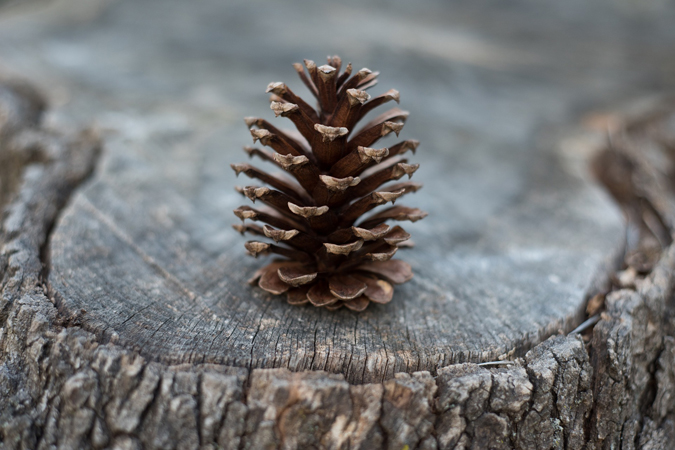
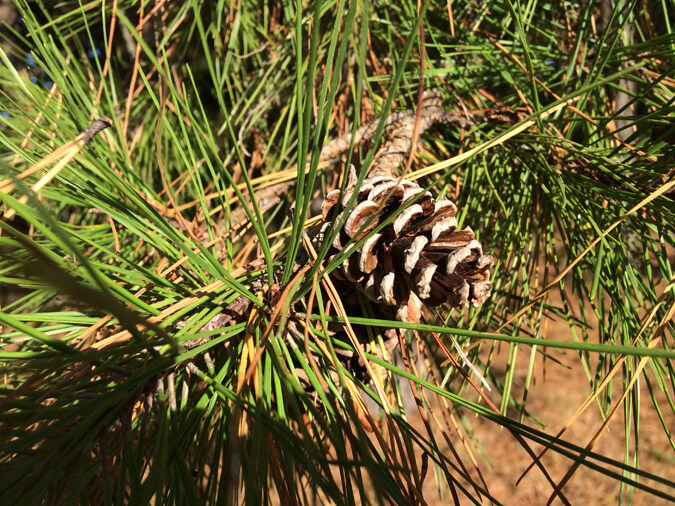
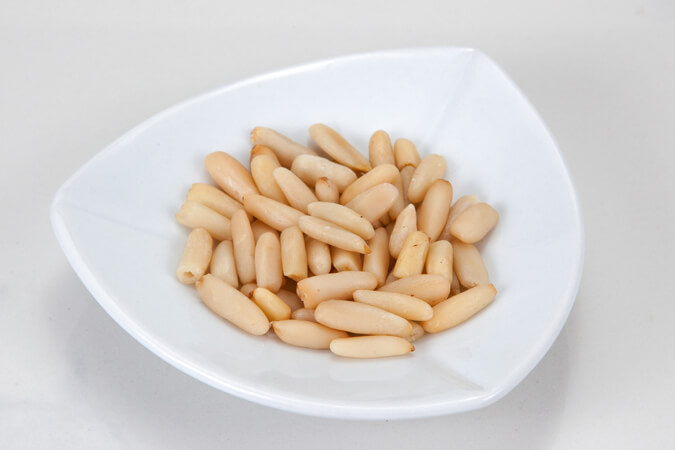
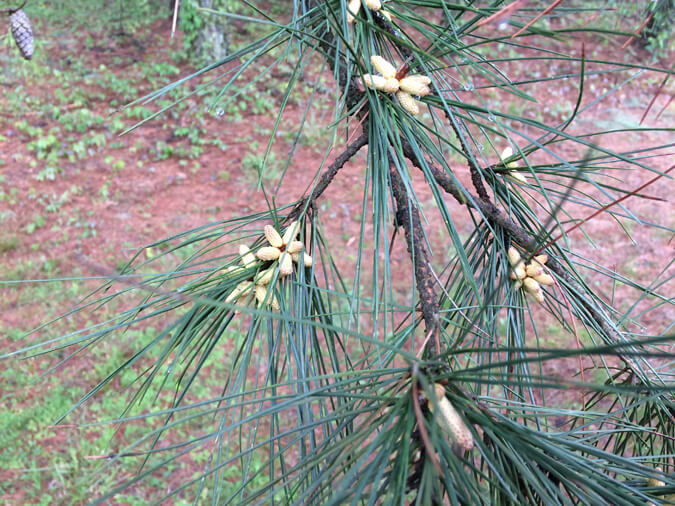
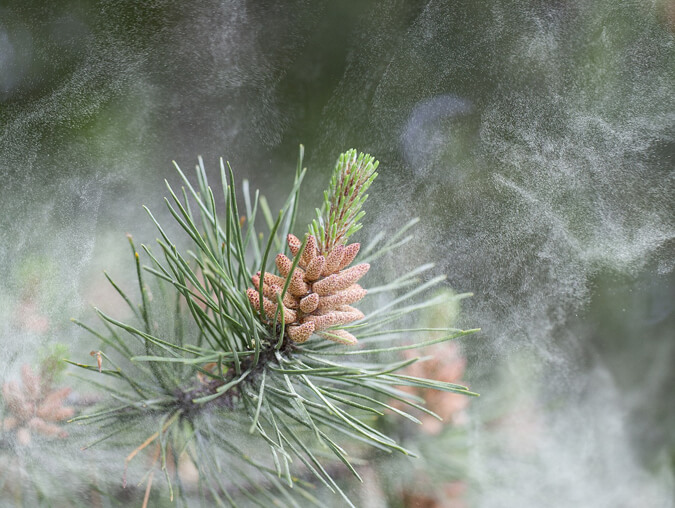
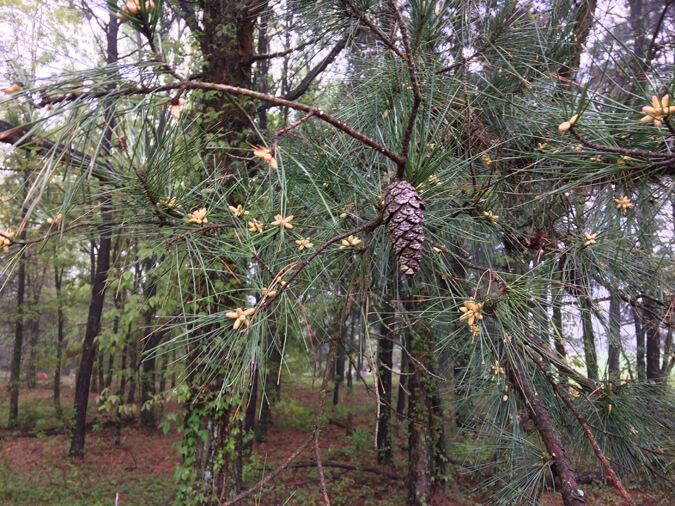

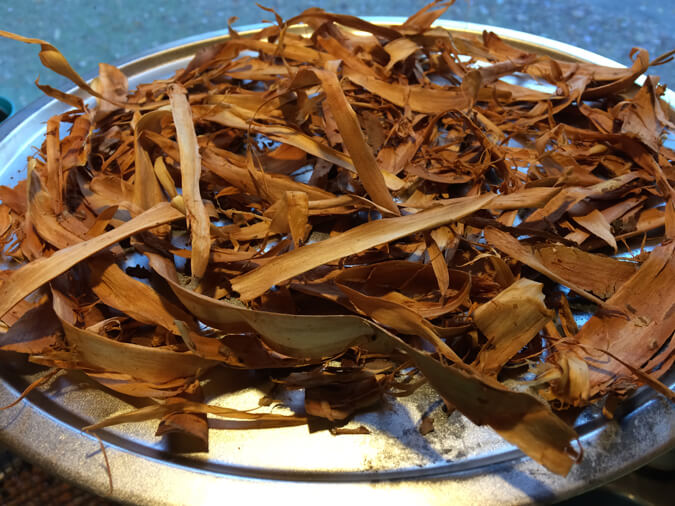
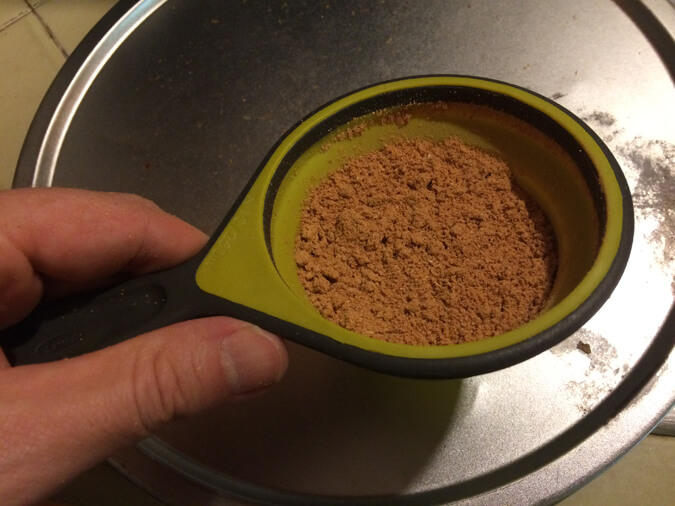
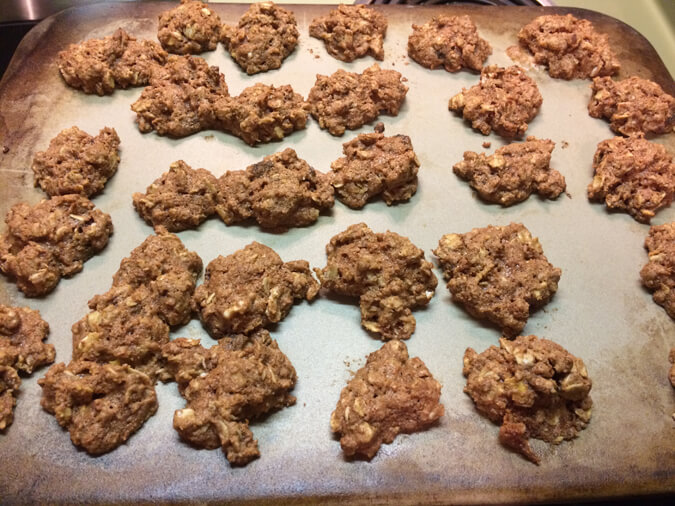
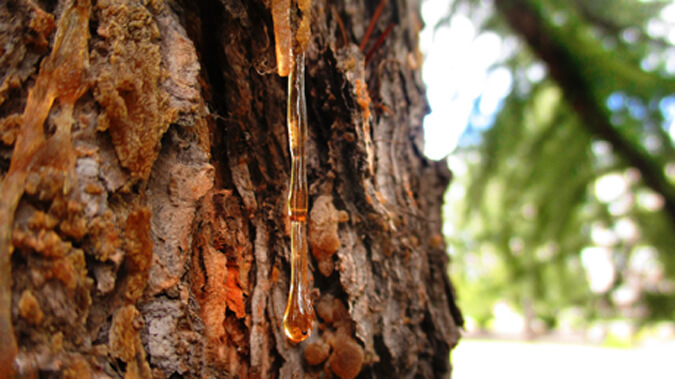
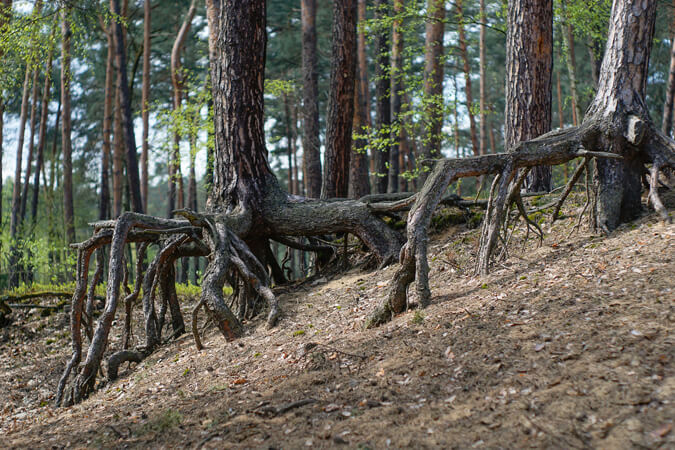







COMMENTS(34)
As usual, Scott, informative, enjoyable and interesting (I will leave some other adjectives for other folks, lol). I have known about several of these uses; but not nearly all of them. Thanks for your posts. I really enjoy reading them and (as winter has set in here in my neck of the woods) I will be reading a lot in the coming months. Happy foraging. Blair
Thanks for much! I’ve got quite a few books on my list as well.
God certainly has a reason for everything if we are just open to continue learning from His wisdom. I have an allergy to pine nuts (even though I like the taste of them), but maybe not the sap or the bacon. Thanks for sharing!
I just found out the tallest is an 81.79 m (268.35 ft) tall ponderosa pine located in southern Oregon’s Rogue River-Siskiyou National Forest. Cool beans!
Thanks for the information! I have made pine needle tea and harvested tiny, non-commercial pine nuts, but I haven’t tried cambium, the male cones, or pollen. Good news for me is that we have plenty of pine trees in the metro-Atlanta area.
Branches for most of our pine trees are 50+ feet in the air, which makes harvesting anything from those branches difficult, but a local park has a field full of pine saplings. If the field remains un-mowed, I will look for the pollen-producing cones this spring — they should begin producing pollen sometime in March. A greenish-yellow haze on all outdoor surfaces is an annual clue that our local pine trees are releasing their pollen.
Thanks again! -Amy
Ha! Yes, that yellow haze is a good cue. And you’ve hit on one of the pains of pine trees. They don’t always have cooperating branches Where I live, it’s very hilly, and you can often find a tree and a hill or cliff side that will work together for you. But they aren’t always that convenient. Good luck with those saplings! I’m not sure how old they have to be to produce cones.
Marjory!
This is my first comment …. I am so inspired by this article “7 Ways to Eat a Pine Tree” …. thank you so much for writing and sharing this info!
Warm Regards,
Kev
Do redwoods count?
That is a GREAT question! Redwoods are not in the same genus as pine trees. Thus, they do not fall under the same “all pines are edible” umbrella. I don’t know of any references to redwoods having edible parts. But there may be some that I’m not aware of.
I made a pain tincture using pine,cypress and spruce needles. It works well and smells so good. I have a recipe for pine cone cough syrup but could not get the young cones in time to make it. Maybe this year.
That sounds really nice. I’ve been tinkering around with pine cough drops, myself. Good luck with the cough syrup!
This was all new to me.Very informative.Lots of pine trees here.
Glad I could share! Enjoy those pines.
I have made pine-infused lip balms. They are popular with the guys!
I bet it was! Sounds like a great idea. I might steal it. 😉
I was aware of using the needles, sap and the nuts. Thanks for the info. on the other parts of the tree
Glad you hear you enjoyed the info Chris. I hope you get a chance to sample some of that pine-y goodness soon.
I have read that the Ponderosa Pine needle and inner bark are not recommended to be use as an edible.
{Ponderosa Pine. The Agricultural Research Service of the U.S. Department of Agriculture says the needles of the ponderosa pine, Pinus ponderosa, contain isocupressic acid, which can induce abortions during the first trimester of pregnancy in cattle. …
Yew Tree. …
Australian Pine.}
{Yew Pine. … However, the fleshy seeds of the yew pine, which isn’t a true pine, resemble fruit and are mildly toxic when eaten by children. Symptoms of ingestion include nausea, vomiting and diarrhea. Ingestion of yew pine may also cause vomiting and diarrhea in domestic animals, including dogs, cats and horses.}
That it might cause problems in humans as well. And while a Yew in not really a pine, being evergreen some associate all evergreens as pines.
You can however eat the nuts of any true pine.
Here ya go Lyda, https://csuvth.colostate.edu/poisonous_plants/Plants/Details/68
I haven’t done a ton of research on Ponderosa Pines, but that sites outlines this as only affecting cattle, bison, and sheep. (Granted I would caution pregnant woman from consuming any pine until well after delivery).
Great read Scott, very interesting and enlightening. Other than pine nuts, (which I use all the time), I have pretty much ignored the edibility of the rest of the pine trees. I’m looking forward to chewing some bark flowers and needles. Thank you!
Thanks cre8tiv369 . I’m glad to hear that you’ve had luck with pine nuts. I don’t have any good species for pine nuts around me. On the topic of chewing pine needles, remember that different trees (and branches) will taste different. If you don’t like your first mouthful, spit them out and try again. Thanks for the comment.
I’m not a doctor, but I think that people often err way too far on the side of caution when it comes to plants and pregnant women, or plants and children. Please don’t take that as encouragement to chew on things randomly. It’s just my observation based on some rather ridiculous claims I’ve seen about some very safe plants. …but yes, let’s not eat anything with “yew” in the name.
The ponderosa pine needles can cause abortion in cattle in the LAST trimester, not the first. I could not believe that the USDA site would have it wrong. They don’t, it says the last trimester, which is correct.
I went on a wild edible walk and we were shown that the young, green tips of the grand fir (I know, not a pine) are very high in vitamin C. They are pretty tatsty, too. Our instructor told us if you have been eating some of them and then suddenly they do not taste good to you anymore, stop because that is your body saying you have had enough.
I have chewed on the needles and made tea from them, I have not harvested my own nuts, but have eaten them of course.
I find myself battling drowsiness in the afternoons at work….
so I have availed myself of the sap from the pines outside the office door.
I prefer sap that has aged a little and is more crispy. It has become my chewing gum.
My mother grew up in a forested area and always used the aged sap as her chewing gum.
Here’s how I eat my pine trees: I put them in my wood chipper and turn them into mulch. Then I compost the mulch into rich humous. I then take the rich soil and plant the things that I actually enjoy eating. Now I do very much enjoy eating my moringa trees but I will leave the pine trees for you to enjoy eating.
I’ve heard you can make pine needle vinegar and it tastes a lot like balsamic vinegar. My first batch molded but I’m gonna try again! My mother from Austria made cough syrup from pine shoots. It is so tasty! They also make liquor in Austria from shoots of pine.
Thank you for sharing.
This is a great article. I have made pine lip balm, which you could add to your list and made pine needle tea (high in Vitamin C) but didn’t know about the other uses. We have over 5,000 overgrown Christmas trees that we can no longer sell. The added taxes on small Christmas tree growers has made it unprofitable. You have given me such great ideas as to what to do with the thousands of trees we have. Thank you!!!
Scott I always enjoy reading your articles, but you really outdid yourself here. Thank you for such useful information and written so very well. Thank you for your time. You really blew my mind, I’ve been living around these trees all my life how did they not teach us this in school? I feel dumb, but so excited as we will be gathering needles for tea soon. Then, who knows?
Loved the article. I have chewed on pine needles on rare occasion, and I have made cedar tea. I have collected sap from the balsam fir, but don’t really know what to do with it now that I have it. It’s a few years old now, and is probably a rock. We have an awesome place in northern NY where my brother in law has a cabin on a lake we frequent in the summer and fall. ENDLESS pine trees! Everyone thinks NY is a huge city. HAH! It’s actually mostly farm land and mountains and lakes! Any idea what I can use old pine sap for? I am definitely going to be trying the pollen this spring. Thanks so much.
I have never thought about eating anything pine, very informative.
Our huge pine trees were severely damaged in a wind storm a couple of years ago. The ones that are left are too tall to get to the needles and branches.
We are looking to plant more. Is there a particular species that is the best to plant (with over 200 to choose from!)? I am in Zone 5. Thanks!
I stepped on a nail a while back and thought I would tend it at the end of the day. Well, the puncture site suddenly swelled up a few hours later and my toes froze and I started to feel really bad. I thought “this isn’t good”. I remembered about plantain poultices and hobbled out at dusk to pick a double fistful of plaintain. I blended it up with some water and found a tub to put my foot in and set down in front of the fire to soak my foot. I gradually realized it was going to be a long, cold night and I was feeling too bad to get up again. I called my son to bring me a couple of ziplock bags and some duct tape. I poured the slurry in the bags and taped the poultice to my foot and put it up on a pillow and got under a quilt. It took all night to get the infection down where I could sleep. The next morning I was back where I started, with just a hole in my foot and a lot wiser and more humble. I determined to do first things first this time. I hobbled out to a pine tree and found a globule of sap which I pounded up in a mortar to powder and mixed with a little manuka honey to make a stiff little ball which I pasted on the hole and then promptly forgot abut it. It held itself on just fine and wore off over the next few days. Pine is supposed to be the strongest “draw-er” out there for microbes and infections. Next time I will do pine first instead of last.
In Finland during famines we have traditionally been eating bread done from pine flour. Now it is very expensive and is sold as health food in some bakeries. It is good to know all these possibilities for survival before the great famine which is sure to come and is told us before in the Bible in the End times, which are already here. In Europe half of it is flooding and other half is overheated and there will certainly be no crops this year. And this will be the pattern to come. The black horse in
Revelation chapter 6 is on his way as all the other horses as well. It is worth to read what Bible tells us now a days. To be ready for difficult times, which are actually here already. White horse=deception, red horse=terrorism, war, Black horse=famine, Pale horse= death and Hell, war and famine, pestilence (biologic warfare, Covid-19), and beasts, which might be tics and viruses as well. When antibiotics fail, it is good to know nature’s treasures of all kinds.